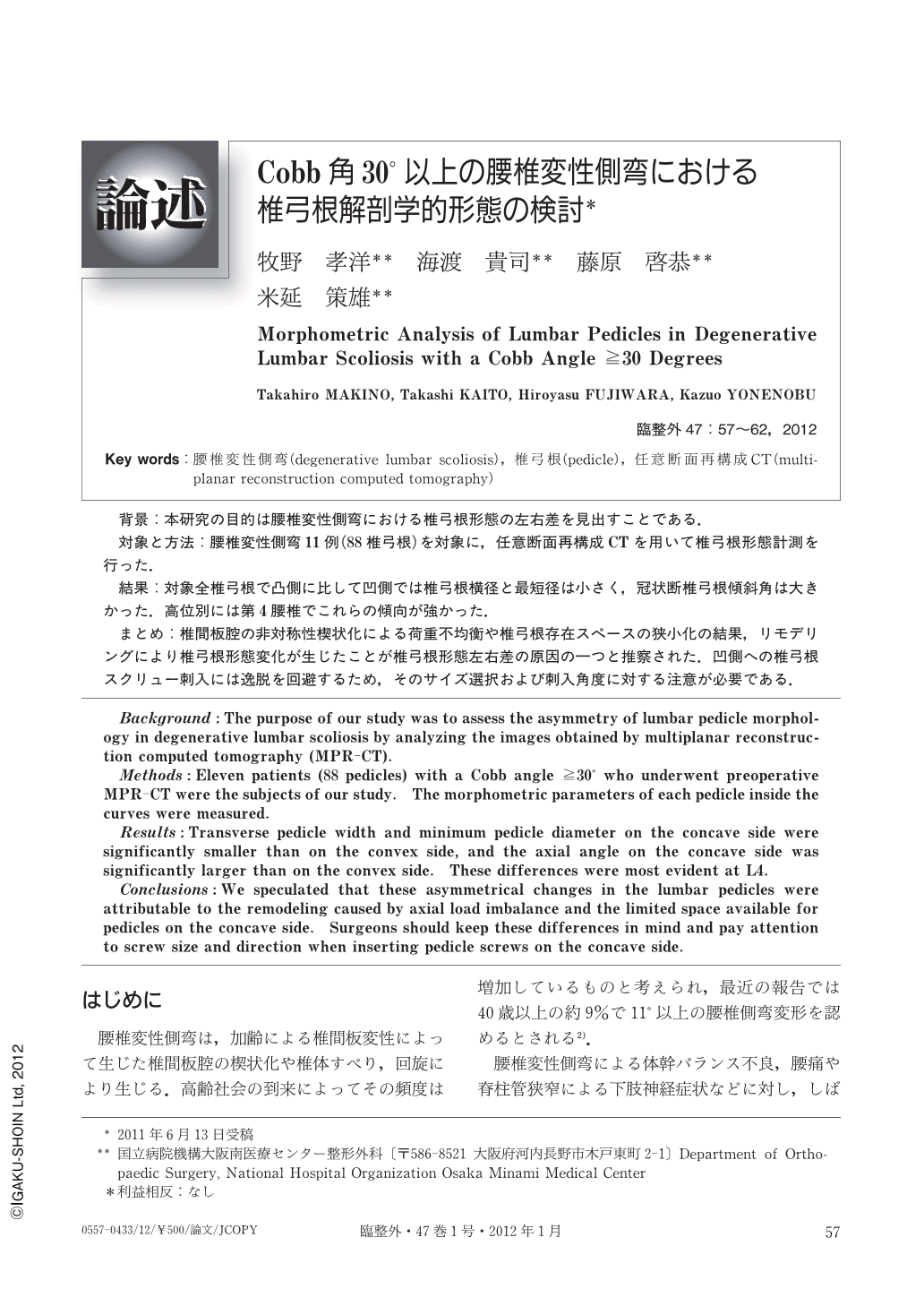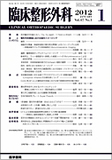Japanese
English
- 有料閲覧
- Abstract 文献概要
- 1ページ目 Look Inside
- 参考文献 Reference
背景:本研究の目的は腰椎変性側弯における椎弓根形態の左右差を見出すことである.
対象と方法:腰椎変性側弯11例(88椎弓根)を対象に,任意断面再構成CTを用いて椎弓根形態計測を行った.
結果:対象全椎弓根で凸側に比して凹側では椎弓根横径と最短径は小さく,冠状断椎弓根傾斜角は大きかった.高位別には第4腰椎でこれらの傾向が強かった.
まとめ:椎間板腔の非対称性楔状化による荷重不均衡や椎弓根存在スペースの狭小化の結果,リモデリングにより椎弓根形態変化が生じたことが椎弓根形態左右差の原因の一つと推察された.凹側への椎弓根スクリュー刺入には逸脱を回避するため,そのサイズ選択および刺入角度に対する注意が必要である.
Background:The purpose of our study was to assess the asymmetry of lumbar pedicle morphology in degenerative lumbar scoliosis by analyzing the images obtained by multiplanar reconstruction computed tomography (MPR-CT).
Methods:Eleven patients (88 pedicles) with a Cobb angle ≧30° who underwent preoperative MPR-CT were the subjects of our study. The morphometric parameters of each pedicle inside the curves were measured.
Results:Transverse pedicle width and minimum pedicle diameter on the concave side were significantly smaller than on the convex side, and the axial angle on the concave side was significantly larger than on the convex side. These differences were most evident at L4.
Conclusions:We speculated that these asymmetrical changes in the lumbar pedicles were attributable to the remodeling caused by axial load imbalance and the limited space available for pedicles on the concave side. Surgeons should keep these differences in mind and pay attention to screw size and direction when inserting pedicle screws on the concave side.

Copyright © 2012, Igaku-Shoin Ltd. All rights reserved.


